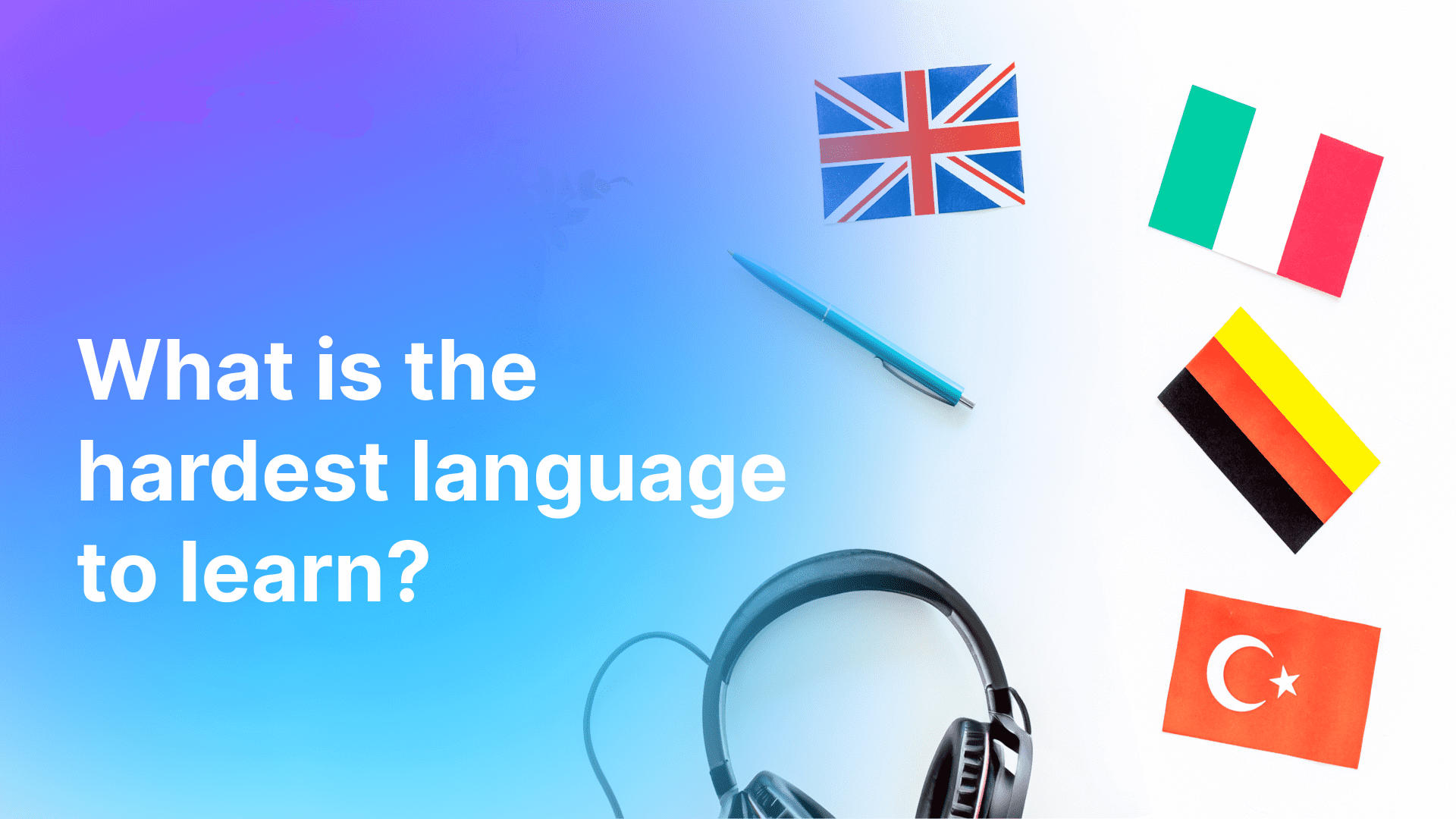Learning a new language can be an exciting journey, but it also comes with its challenges. For many, the difficulty level of a language depends on various factors, such as grammar complexity, pronunciation, writing system, and cultural context. But which language is truly the hardest to learn? In this article, we will explore the factors that make some languages more difficult to learn than others, according to experts, and identify some of the world’s most challenging languages.
Factors That Determine Language Learning Difficulty
Before diving into specific languages, it is essential to understand the key factors that influence the difficulty of learning a language. These factors can vary based on the learner’s native language, cultural background, and personal preferences.
1. Language Family and Similarity
One of the most significant factors in determining the difficulty of learning a language is its similarity to the learner’s native language. Languages within the same family often share common roots, vocabulary, and grammar structures. For example, English speakers may find it easier to learn German or Dutch, which are also Germanic languages. On the other hand, learning a language from a different family, such as Mandarin Chinese or Arabic, may be far more challenging due to the lack of similarities.
2. Grammar Complexity
The complexity of a language’s grammar can significantly impact its difficulty level. Some languages have simple, straightforward grammatical rules, while others are filled with exceptions, irregularities, and intricate sentence structures. For instance, Finnish is often considered difficult due to its 15 grammatical cases, while Japanese features complex honorifics and verb forms based on context and social hierarchy.
3. Pronunciation and Phonetics
Pronunciation is another critical factor that can make a language challenging to learn. Some languages have sounds that do not exist in the learner’s native language, making them harder to produce correctly. For example, Mandarin Chinese is a tonal language, meaning that the pitch or tone used when pronouncing a word can change its meaning entirely. Similarly, Arabic has sounds produced deep in the throat, which can be challenging for non-native speakers.
4. Writing System
The writing system of a language can also pose a significant challenge. Languages that use alphabets different from the learner’s native language, or those with complex writing systems, such as logograms or characters, can be particularly tough to master. For example, Mandarin Chinese uses thousands of characters, each representing a word or concept, requiring extensive memorization. Japanese combines three scripts: Hiragana, Katakana, and Kanji, further complicating the learning process.
5. Cultural and Contextual Understanding
Understanding the cultural context in which a language is spoken is crucial for achieving fluency. Some languages are deeply intertwined with their culture, using idioms, metaphors, and references that may not have direct translations or equivalents in other languages. This cultural aspect can make it harder for learners to grasp the nuances and subtleties of the language.
Expert Insights on the Hardest Languages to Learn
Linguists and language experts often debate which language is the hardest to learn. While there is no definitive answer, several languages consistently appear on the list of the most challenging due to the factors discussed above.
1. Mandarin Chinese
Mandarin Chinese is frequently cited as one of the hardest languages to learn, especially for English speakers. As a tonal language, Mandarin uses four different tones, meaning the same syllable can have multiple meanings depending on the tone used. Additionally, Mandarin’s writing system, which relies on thousands of characters, requires years of study to master. The lack of a direct relationship between written characters and their pronunciation further complicates the learning process.
2. Arabic
Arabic is another language that many find challenging due to its complex grammar, pronunciation, and script. Arabic has several dialects, each with its own unique vocabulary and grammar rules, which can make it difficult for learners to achieve fluency across regions. The script is written from right to left, which is unfamiliar to most English speakers. Additionally, the language features sounds not found in English, such as guttural consonants, and has a root-based morphology, meaning words are often derived from three-letter root patterns.
3. Japanese
Japanese poses a unique set of challenges for learners. The language has three writing systems: Hiragana, Katakana, and Kanji. Kanji, which is derived from Chinese characters, requires memorizing thousands of characters, each with multiple readings and meanings. Japanese grammar is also complex, with different levels of politeness and formality that change the way verbs and adjectives are conjugated. Additionally, Japanese lacks many of the cognates found in other languages, making vocabulary acquisition more difficult.
4. Korean
Korean is considered one of the hardest languages to learn due to its unique writing system (Hangul) and complex grammar. While Hangul is relatively easy to learn compared to Chinese characters, Korean grammar involves honorifics and verb conjugations that change based on the speaker’s relationship to the listener, the formality of the situation, and the level of politeness required. The pronunciation of certain sounds, such as double consonants, can also be difficult for non-native speakers.
5. Finnish
Finnish is known for its complex grammatical structure, with 15 grammatical cases that can modify nouns, adjectives, and pronouns. The language also has a unique vocabulary that shares little similarity with other languages, making it harder for learners to pick up. Additionally, Finnish uses long compound words and has vowel harmony, which adds another layer of difficulty for language learners.
Other Challenging Languages
While the above languages are frequently mentioned as the most challenging, others like Hungarian, Thai, Russian, and Icelandic also pose significant challenges due to their unique grammar, pronunciation, and writing systems. The difficulty of learning any language ultimately depends on the learner’s background, experience, and motivation.
Tips for Learning a Difficult Language
Despite the challenges, learning a difficult language is not impossible. Here are some expert tips to help you succeed:
1. Immerse Yourself in the Language
Immersing yourself in the language by listening to native speakers, watching movies, reading books, and practicing speaking can help you grasp pronunciation, vocabulary, and grammar more naturally.
2. Use Language Learning Apps and Tools
Leverage language learning apps, flashcards, and online resources that offer interactive exercises and practice sessions to help you stay consistent in your learning journey.
3. Practice Regularly
Consistency is key to language learning. Dedicate time each day to practice, even if it’s just a few minutes. Regular practice helps reinforce what you’ve learned and build confidence.
4. Learn with a Native Speaker
Consider language exchange programs or finding a language tutor who is a native speaker. Engaging in conversation with native speakers helps you learn the natural flow of the language, idioms, and cultural nuances.
Conclusion
Determining the hardest language to learn depends on several factors, including the learner’s native language, the language’s grammar complexity, pronunciation, writing system, and cultural context. While Mandarin Chinese, Arabic, Japanese, Korean, and Finnish are often cited as some of the most challenging languages, any language can be learned with the right approach, dedication, and resources. No matter which language you choose to learn, embrace the challenge, stay motivated, and enjoy the journey of discovery and growth.
Read More: Learn to Sit Back and Observe. Not Everything Need – tymoff









